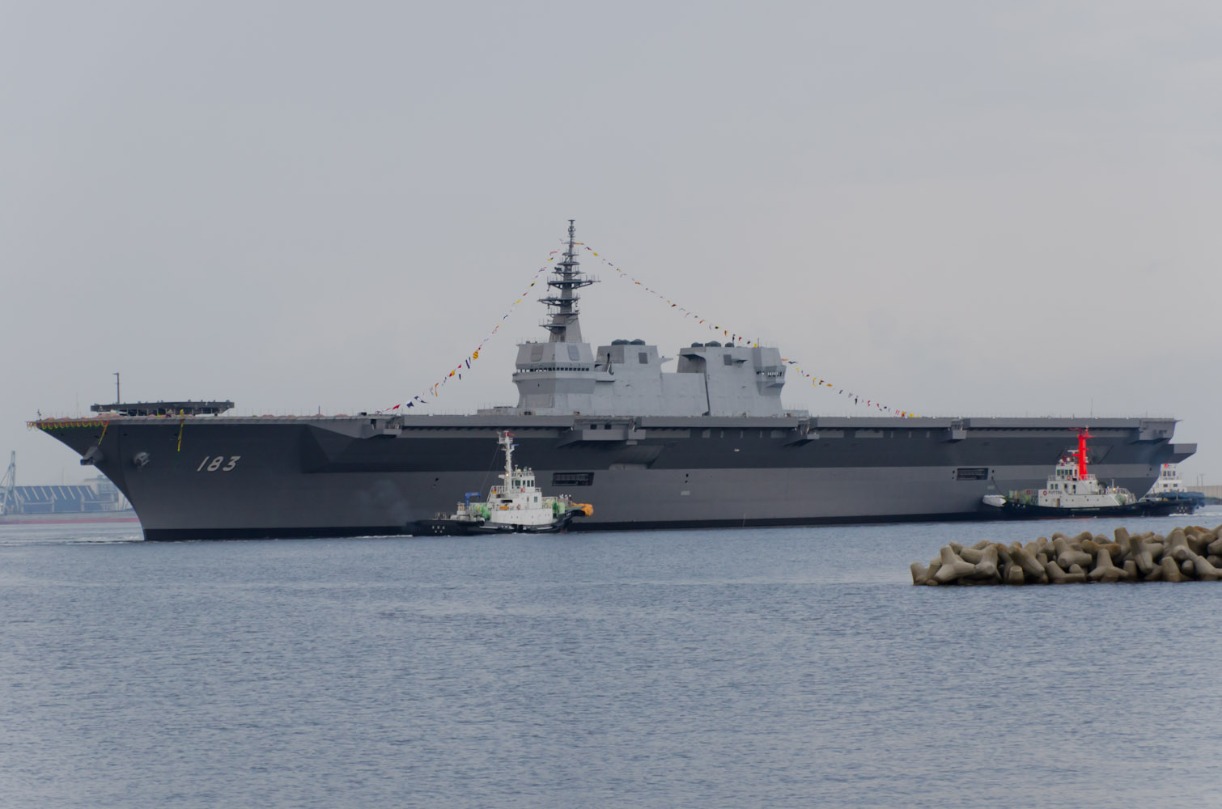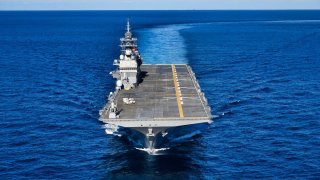'Medium' Aircraft Carriers: How the U.S. Navy Can Save the Aircraft Carrier?
Instead of abandoning aircraft carriers entirely, the Navy could adopt a more balanced approach by investing in medium-sized aircraft carriers, inspired by Japan's Izumo-class helicopter carriers. These smaller, more agile carriers are cost-effective, versatile, and harder to target, offering a resilient means to project power in contested regions.
Summary and Key Points: The U.S. Navy's reliance on large aircraft carriers like the Nimitz and Ford classes is increasingly risky due to their vulnerability to advanced anti-access/area-denial (A2/AD) defenses from adversaries such as China and Russia.
-Instead of abandoning aircraft carriers entirely, the Navy could adopt a more balanced approach by investing in medium-sized aircraft carriers, inspired by Japan's Izumo-class helicopter carriers. These smaller, more agile carriers are cost-effective, versatile, and harder to target, offering a resilient means to project power in contested regions.
-This shift could ensure the Navy's continued effectiveness without the high costs and risks associated with supercarriers.
The Case for the Medium Aircraft Carrier?
Because the United States Navy has invested so much of its resources into its aircraft carrier program, letting go of the flat top as a key element of its fleet will be difficult to do. So, rather than totally abandoning the carrier program in the age of the contested battlespace, it might be best to compromise.
Aircraft carriers certainly allow for immense power projection (so long as the area these warships are being deployed to can be penetrated by naval airpower without significant risk to the expensive carrier). As it stands now, however, China, Russia, and some other American rivals have robust anti-access/area-denial (A2/AD) defenses in their respective regions of the world that would likely negate the power projection advantages that the US Navy’s aircraft carriers provide. What’s more, the Nimitz-class and new Ford-class aircraft carriers are so large that they might provide an easy target for those A2/AD systems.
The Navy might want to invest instead in building up its medium-sized aircraft carriers. Or, look at the Japanese helicopter carrier concept. The US military has previously explored the concept of medium-sized carriers (designated “CVV”). Back in the 1970s, the Navy was interested in building a fleet of these medium-sized carriers as opposed to the costlier, more complex Nimitz-class carriers.
Yet, the Reagan era defense buildup of the 1980s allowed for the Navy to sink these plans for more cost-effective, less complicated medium-sized carriers, and continue to build the monstrosities that it (and the defense contracting community) prefers.
Navy Costs are Unsustainable
Today, just as with the 1970s, the United States cannot afford to lavish its tax dollars on the defense department—or any government program, really—the way that it has done for the last 30 years. Interestingly, it is precisely because Congress and successive presidents from both parties have lavished gobs of tax dollars on the Department of Defense that we are now at risk of losing a major war.

These expensive weapons systems, such as the aircraft carriers the Navy relies upon, have become so complex and costly that we lack the means to replace them or even repair them in a timely, affordable manner if they are lost or damaged in combat. If these systems are taken out of the fight, as America’s rivals plan to do early in any conflict, then America would risk losing a war, as there are few other offensive systems that could project power the way that US flat tops can.
America’s rivals understand that the sophisticated and expensive systems, such as the aircraft carriers, are now at least as much of a liability for the US Navy in the face of their robust A2/AD capabilities as these systems are an advantage for the US military looking to project power.
Therefore, building less sophisticated, smaller, and harder-to-destroy systems will be key for the United States. Because, right now, the aircraft carriers that once played such an important role for maintaining America’s deterrence against its foes are no longer performing that function. Rival states, notably China, do not fear the American aircraft carrier as they did during the 1996 Taiwan Strait Crisis.
Navy Should Look to Japan's Izumo-Class for Inspiration
According to Stavros Altamazoglou, “The Navy is exploring ‘Lightning Carriers’ that can operate the F-35B Lightning II stealth fighters, offering a versatile and risk-mitigated approach to maintain operational capability in contested regions like the South China Sea and near Taiwan.”
Again, this is precisely the concept underlying Japan’s investment in helicopter carriers (from where vertical-takeoff warplanes, like the F-35, can be deployed). Japan’s Izumo-class “helicopter-destroyer” cost around $1.2 billion to build and is widely considered the most advanced indigenously built and operated warship in Asia today.

Compare that to the $13 billion-a-pop Ford-class aircraft carriers (which, again, might not even be deployable in a contested environment, like the South China Sea or the Taiwan Strait).
The Navy is steadfast in its commitment to the concept of aircraft carriers. If they won’t abandon this cultish obsession with a weapons system that could easily be proven to be too valuable to fight, at least they could invest in cheaper, more maneuverable, harder-to-hit medium-sized carriers, like the Japanese Maritime Self-Defense Force has been doing.
About the Author
Brandon J. Weichert is a former Congressional staffer and geopolitical analyst who is a contributor at The Washington Times, as well as at American Greatness and the Asia Times. He is the author of Winning Space: How America Remains a Superpower (Republic Book Publishers), Biohacked: China’s Race to Control Life, and The Shadow War: Iran’s Quest for Supremacy. Weichert can be followed via Twitter @WeTheBrandon.
All images are Creative Commons.
From the Vault
Russia Freaked Out: Why the U.S. Navy 'Unretired' the Iowa-Class Battleships
Battleship vs. Battlecruiser: Iowa-Class vs. Russia's Kirov-Class (Who Wins?)


